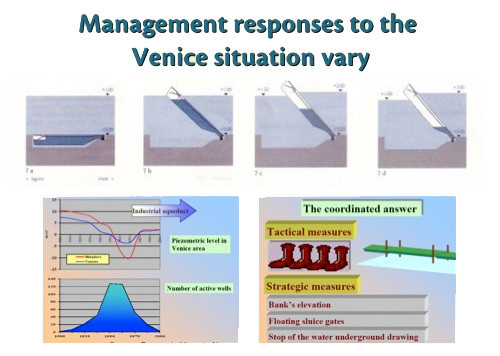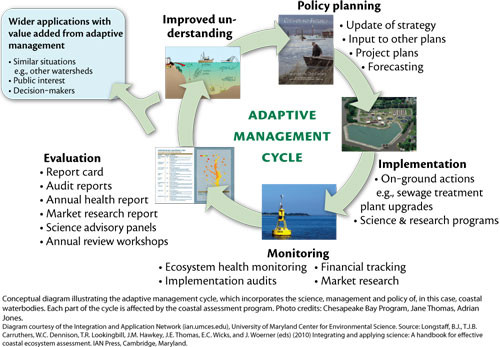Brisbane 2011: Living with Floods and Dancing with Dugongs: Part 9- Sea-level Rise and Flooding
Bill Dennison ·Sea-level rise has led to increased flooding. Flooding has always been around, but as you can see, over time, more and more flood events occur. This correlates with the rise in relative sea-level, which is due to the ocean getting higher, but also from the land getting lower. The net result is what is most important; the relative sea-level rise.
In Venice, as well as many areas of coastal Louisiana, relative sea-level rise is accentuated by land subsidence, which has to do with ground water extraction. So starting in the mid part of the 20th century, it was realized that groundwater was causing this problem. So they started shutting down the groundwater extraction (used for drinking water), and piped the water in from the mainland. The Po River was diverted so there isn’t as much sediment coming down. And they constructed these tremendously large engineering works - these submerged flood gates, at the inlets between the barrier islands, can be activated during the storm surge events. Compressed air is pumped in there and the barrier is raised. There is enough of a seal to create a temporary sea-level barrier. Groundwater extraction was stopped, hip boots are passed out and little footpaths are created on the streets. They're not going to give up on Venice.
The historical perspective is amazing. Venice was settled in around 1100 A.D. We were in this church for the conference. It was a fantastic venue. It was the upstairs venue where we sat and bored ourselves with PowerPoints. Then, downstairs we had a coffee and tea, and I was down there talking to one of the Italians. I was looking at the beautiful marble column walkway that was built up, and we realized we were standing a couple feet higher than the original foundation, but they made a hole so you could see the top and bottom of the column. I asked the Italians when they did this renovation, and they said, "Very recently, we just finished it." I asked when exactly they started it and they told me that it was around 1880. So their concept of time is very different.

But, when you get to sea-level rise and the rates, that concept of time is very relevant. What can we learn about this tour of the five flood examples? Here are the things that I am taking away from those five experiences. One is that Brisbane is not unique in being flood prone. Two is that learning moments can be seized, and I think that is something we need to do in Southeast Queensland. And thirdly, large infrastructure investments are often stimulated by the floods. You look at London or Louisiana or Venice, and people will spend big dollars as a result of the floods; the typical emphasis is on 'hard' engineering solutions and what we really need are integrated strategies, with 'soft' engineering like marsh creation or better planning and preparation, and better adaptations. So I think that these examples allow us to project what we're going to see in the future. We're probably going to see some sizable investments, and we should probably try to direct those in the most appropriate ways possible.

This blog post was created from a presentation by Bill Dennison, delivered at the historic Customs House in Brisbane, Australia on 8 July, 2011 (full powerpoint presentation can be accessed on IAN Press.
About the author
Bill Dennison

Dr. Bill Dennison is a Professor of Marine Science and Vice President for Science Application at the University of Maryland Center for Environmental Science.